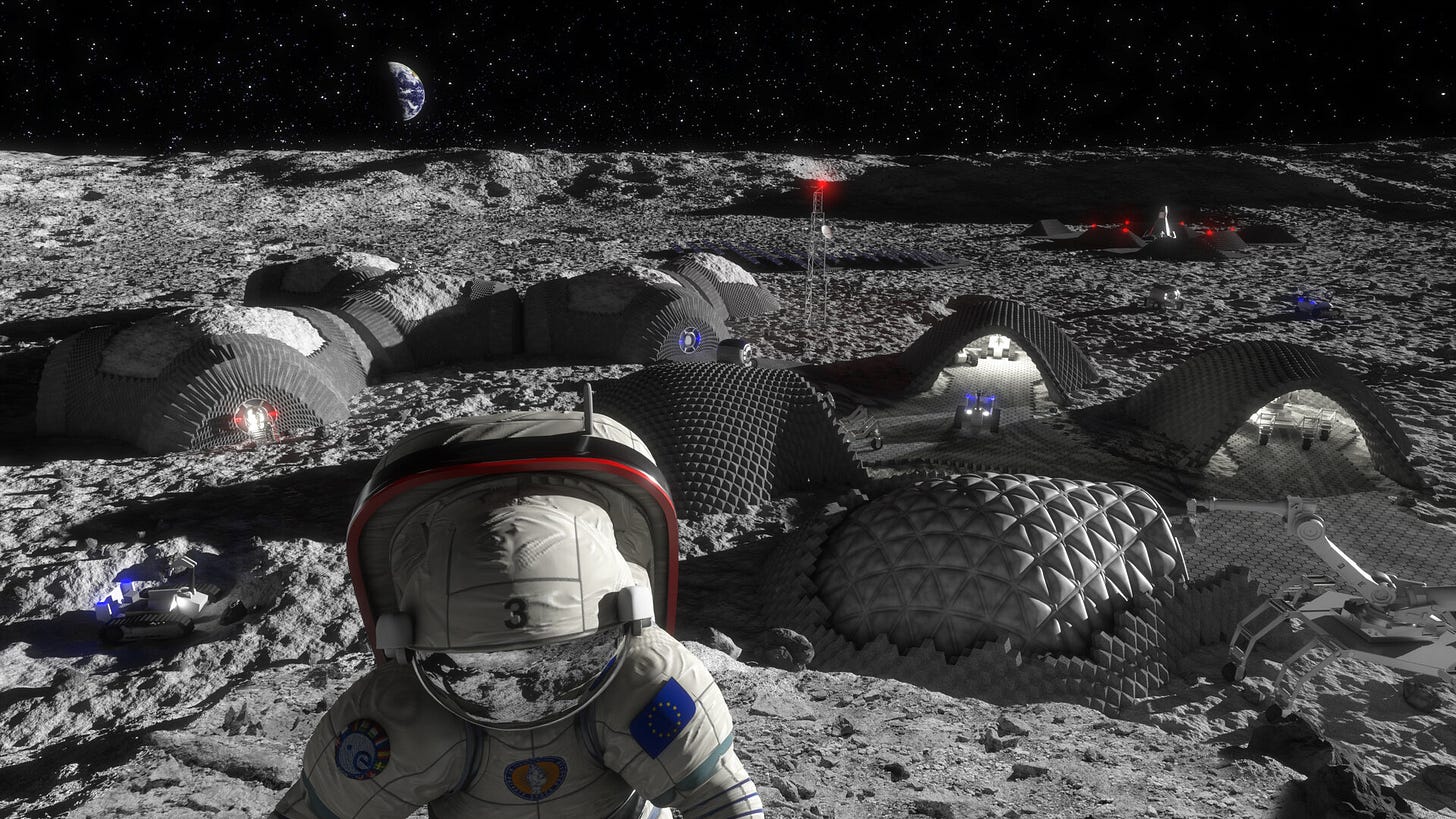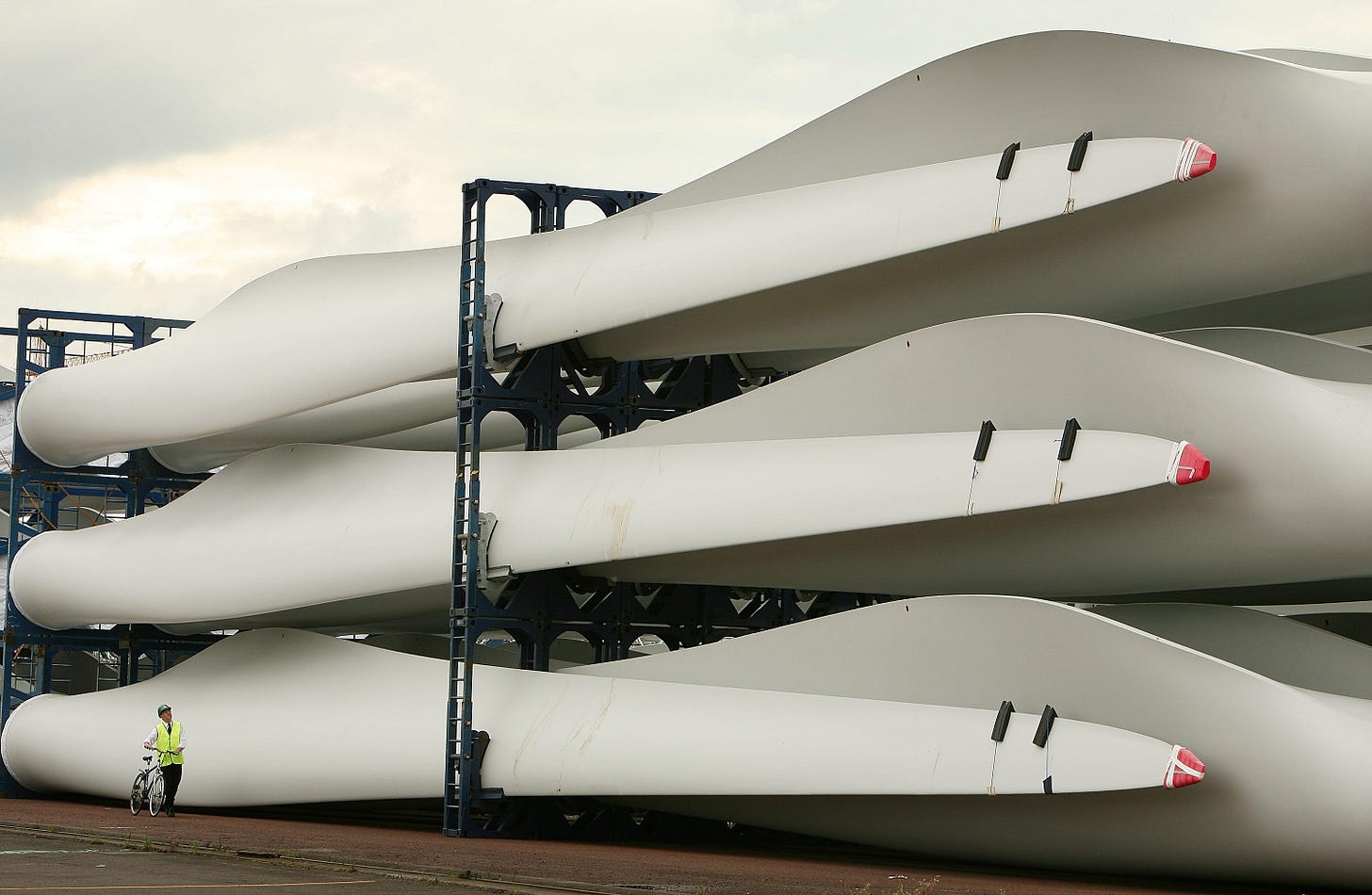#26: Pyramids, Cloud Kitchen, AI bankrupting Google, Floppy disks, Sustainable Fuel, Asteroids, Turbines Blades, and more!
Hi everyone!
Last year, I got invited to the 🇺🇸 US to speak about cryptocurrencies and decentralized finance (DeFi). If you're interested, you can watch the recordings of my talks on YouTube:
It was my first time in the US, and I had a blast. I met a lot of interesting people and got the chance to visit Philadelphia 🔔. My trip was brief, but I’m hoping other opportunities will present themselves in the coming years.
Enjoy the newsletter,
Xavier
🤓 Cool Stuff I Found on the Internet
Another hidden chamber found in the Great Pyramid
The Great Pyramid of Giza is 4500 years old and still hasn’t given up all its secrets. Archeologists found a hidden 9 meter long corridor above the entrance. It’s completely empty and likely used to distribute weight within the pyramid. It was discovered through Muon tomography: they placed detectors around the pyramid to capture muons from outer space that travel through it. Muons weakly interact with matter and lose energy when they do so. By measuring the energy of the muons, you can see whether they passed through solid rock or an open void. Big Think has a great explanation about the technique.
Leonardo Syndrome
Do you want to learn so much and keep starting new projects while finishing very few? Congrats, you're suffering from Leonardo syndrome, named after Leonardo da Vinci. He started many projects that he abandoned. This post argues that it's not necessarily a bad thing: consider all the things you wouldn't have done when you had finished every project you started. Failing to finish a project can lead to something brilliant.
The basics of DNA: infographic
Beautiful infographic about the basics of DNA and genetic systems. The human DNA, for instance, contains 3.2 billion base pairs. That's a lot of information. If you unpack all the DNA in a single person, it would cover the distance between the Sun and Jupiter, 8 times over! Genome sizes various across living organisms, and there is so much we don't know yet.

Floppy disks are still hot!
The 3,5 inch floppy disk was introduced in 1982, and while nobody is making them anymore, they’re still being used. Industrial machines such as embroidery equipment use floppy drives to transfer designs. Old airplanes need floppy’s to update onboard software. Even the US military was using floppy disks for its nuclear arsenal until 2019. As floppies are scarce, the price is increasing. 20 years ago you’d pay 7 cents per floppy. Now it’s over $1!
Next level spamming: single kitchen operates 100+ restaurants
This article introduces you to the concept of a “cloud kitchen”. It’s where a single kitchen is used to create multiple restaurants on platforms like DoorDash or Deliveroo. The author uncovered one kitchen in India that has over 189 different restaurant brands. Wow!
🧠🤖 Artificial intelligence
The cost of AI-powered search engines
After adding AI capabilities to its search engine, Microsoft CEO Satya Nadella said he wants to make Google dance. This article shines a light on how expensive it is to run AI systems at scale. A simple Google query costs the company 1.06 cents and brings in 1.61 cents of revenue. Throw AI into the mix (+0.36 cents), and Google's looking at a $36 billion reduction in income! This could be a substantial threat to Google's business model, which relies on search for over half of all its revenue.
Meta's language model can run on a single machine
Large language models like ChatGPT, or GPT3 require powerful hardware. GPT3 model runs on a cluster of graphics cards and needs over 800GB of memory. This makes it impossible to run it locally on your own devices. Meta now releases a set of models called LLaMA that are much smaller (they can run on a single machine) and outperform GPT3! Simon Willison, an independent AI researcher, believes that we’ll have the ability to run ChatGPT-like models on our own device within 1-2 years.
👽 Space
Terraforming the Moon for practice
Elon Musk’s ambition is to colonize Mars and terraform the planet so we can live there unencumbered. But that’s going to be hard. Mars is further away from the sun (less solar energy). It’s hard to grow plants in Martian soil. The thin atmosphere but relatively high gravity make it tricky to land. There’s a 7-22 minute radio lag. And there’s no magnetic field to protect ourselves from radiation. This article argues we should practice by terraforming the Moon first! It’s closer and has a radio lag of just 1.25 second. In addition, lunar regolith is identical to Earth soil, it just doesn't contain any biological components. In summary, the Moon could allow us to learn valuable lessons that we could use to terraform Mars. I’m in!
Asteroids are plotting revenge
In newsletter 22 and 26, I mentioned the successful asteroid redirection test that NASA conducted. If a huge asteroid comes our way, we should be able to deflect it by smashing a spacecraft into it. However, the Japanese Space Agency found an asteroid that is essentially a rubble pile held together by weak gravity. We can’t smash a spacecraft into that! Even worse, these asteroids are more abundant than previously thought. One potential solution would be to push it off course with a shockwave caused by nuclear explosion, but that has to be tested first.
⚡️ Energy & Environment
Solution to recycle wind turbine blades
Blades of wind turbines are made to withstand the elements for up to 20 years. They’re mostly made from epoxy and carbon fiber, and it’s the epoxy that makes them impossible to recycle (see newsletter 17). By 2050, there’ll be 43 million tons of turbine blades in landfills. Now, Vestas found a way to recycle “the majority” of the epoxy so it can be re-used to make new blades.
Sustainable fuels eliminate the need for electric vehicles?
Countries around the world are heavily promoting (and subsidizing) electric vehicles. This transition will take a while and has its own challenges. One alternative is using synthetic fuels, which are CO2 neutral. The company P1 Fuels makes fuel from biomass and CO2 captured from the air. When combusted, it releases no additional CO2. It’s net zero! At 5 euros per liter, it’s expensive, but the company estimates it’ll compete with regular fuels within 2 years. So the question is: will this delay our transition to EVs? Or will it make the transition irrelevant?
Cleaning up "forever chemicals"
PFAS and PFOS are two examples of "forever chemicals". They're used for packaging, water repellents, cleaning products, paints, etc. However, they cannot be broken down so they accumulate in the environment (including our bodies). Oh, and they're toxic. The University of California found a simple process to break them down: infuse contaminated water with hydrogen and blast it with UV light. The technique is now being scaled up to handle large cleanup operations.





